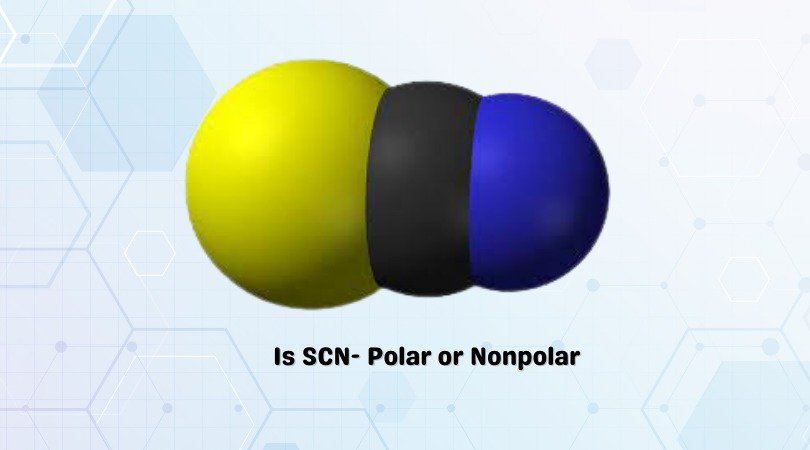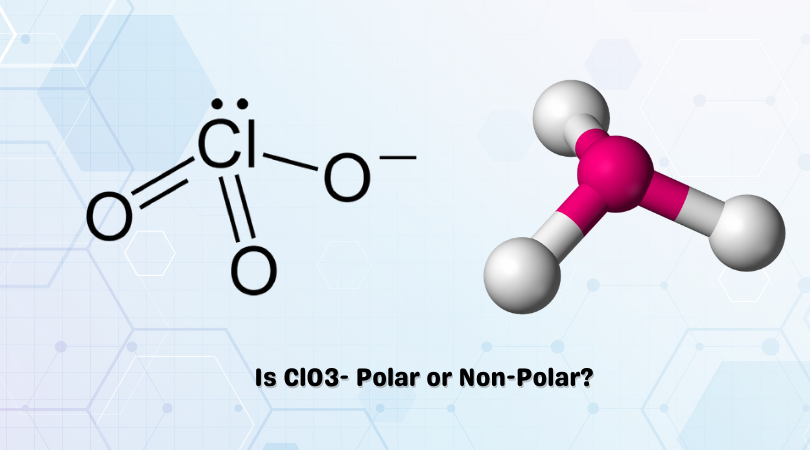SCN- ion or Thiocyanate is an anion as it has a negative charge. Any ion that accepts an additional electron is considered an anion. And as it accepts the electron, it acquires a negative charge. The molecule is also considered as a conjugate base of Thiocyanate acid. Many people question the polarity of this molecule, so I will help you find out if this molecule is polar or nonpolar.
So to answer your question in one sentence, I would say that SCN- ion is a polar molecule. Want to find out how and why? Keep reading this blog post to find all the details about this molecule’s polarity.
For determining the polarity of any molecule, it is vital to know some of the parameters first, which include:
- The shape of the molecule
- Difference of electronegativities in atoms
- Net Dipole moment
SCN- comprises one Sulphur atom, one Carbon atom and a nitrogen atom. In this molecule, Carbon takes the central position as it is less electronegative than the other atoms. Besides that, when you look at the arrangement of atoms and electrons in this molecule, Thiocyanate is a linear molecule. The ion also has a negative charge which can also help us determine if the molecule is polar or nonpolar.
Now, if you look at the electronegativities of atoms for SCN- ion, Nitrogen has the highest electronegativity, and Carbon is the least electronegative atom here. Carbon has an electronegativity value of 2.55, whereas, for Sulphur, it is 2.58. In contrast, the Nitrogen atom has an electronegativity value of 3.08.
Looking at the differences, you can figure out that the difference of electronegativities between Carbon and Sulphur atom is relatively less. But when you compare the electronegativity value of Nitrogen with the other two atoms, it is quite higher.
As the difference of electronegativity is high due to the higher electronegativity value of Nitrogen, the bond between the Carbon atom and Nitrogen atom is polar, and there will be a dipole moment in this molecule. The nitrogen atom tries to pull the shared electron as it is more electronegative. Due to its higher electronegativity, the electrons are pulled towards Nitrogen a little more.
Due to this, the regions around Nitrogen acquire partial negative charges, and the regions around the Carbon atom have partial positive charges. There are poles formed due to the net dipole moment in this molecule. As there are negative charges around the Nitrogen atom, it acts more like a base to adopt the Hydrogen ion. SCN- ion forms a variety of salts by reacting with different alkali metals and alkali earth metals.
Uses of SCN- ion
- In the early 20th century, Thiocyanate ion was used as a treatment for hypertension which has later stopped due to the associated toxicity.
- The corresponding salts of SCN- are used as herbicides in the agrochemical industry.
Concluding Remarks
SCN- ion or Thiocyanate is a polar molecule as there is a net dipole moment in the molecule due to the higher electronegativity value of the Nitrogen atom. And also, as there is a triple bond between Nitrogen and Carbon, the intensity of charges increases around the Nitrogen atom, making SCN- a polar molecule.




